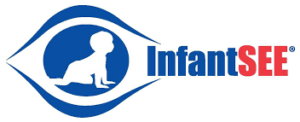Infant Eye Exams with InfantSEE
At Advanced Eye Care Professionals, we recommend an InfantSEE assessment between 6 and 12 months of age to determine if an infant is at risk for eye or vision disorders.
 According to the American Optometric Association, babies should have their first exam around six months of age. By this age, babies should be able to focus, see color, and have depth perception. At this first exam, your optometrist will make sure your child’s eyes are developing normally, checking for signs of near or farsightedness, lazy eye, crossed eyes, or severe cases, such as cancer.
According to the American Optometric Association, babies should have their first exam around six months of age. By this age, babies should be able to focus, see color, and have depth perception. At this first exam, your optometrist will make sure your child’s eyes are developing normally, checking for signs of near or farsightedness, lazy eye, crossed eyes, or severe cases, such as cancer.
Early intervention is critical for successful treatment.
It is estimated that 1 in 5 preschoolers has vision problems that can interfere with learning and behavior, yet during the course of their young lives, many children never see an eye care practitioner who can provide the kind of professional eye assessment necessary to correct those problems.
An InfantSEE assessment between 6 and 12 months of age is recommended to determine if an infant is at risk for eye or vision disorders. Since many eye problems arise from conditions that can be identified by an eye doctor in the infant’s first year of life, a parent can give an infant a great gift by seeking an InfantSEE assessment in addition to the wellness evaluation of the eyes that is done by a pediatrician or family practice doctor.
Learn more about InfantSEE here and request an appointment with our team today.